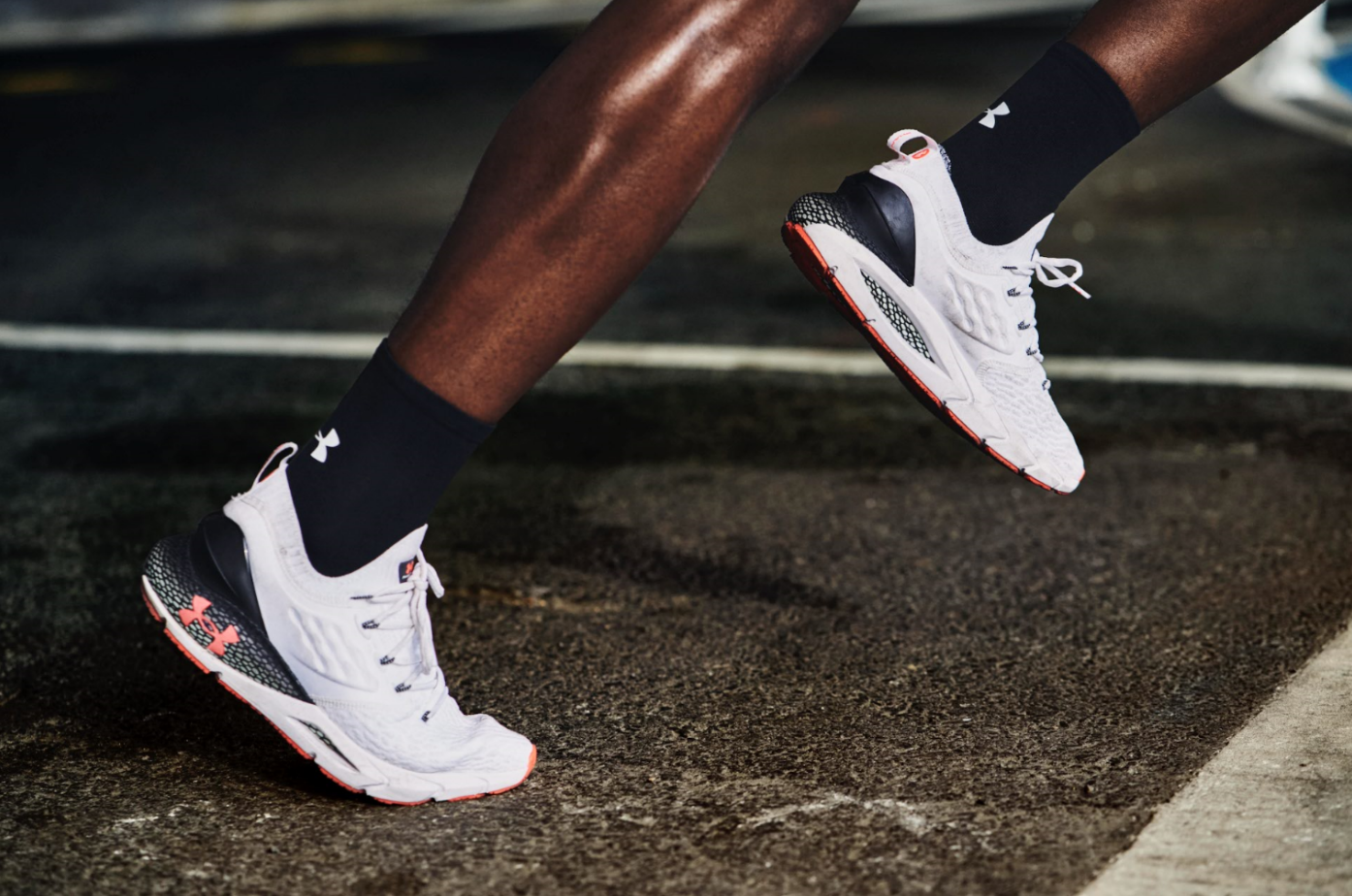Featured
New armour underpins fitness
The shift from strict lockdowns globally has also seen a move back to fitness routines – with a little help from new technology built into workout gear, writes ARTHUR GOLDSTUCK
Share
- Click to share on Twitter (Opens in new window)
- Click to share on Facebook (Opens in new window)
- Click to share on LinkedIn (Opens in new window)
- Click to email a link to a friend (Opens in new window)
- Click to share on Reddit (Opens in new window)
- Click to share on WhatsApp (Opens in new window)
- Click to share on Pinterest (Opens in new window)
It was one thing when my running shoes could speak to an app on my smartphone to keep me updated on pace, stride length and distance. It was altogether a different experience when my shoes told me it was time for a trade-in.
That, in effect, is what happened when I headed out of lockdown for a run in a recently reopened park in my area, wearing Under Armour’s Hovr Phantom SE “smart shoes”. They were about a year old, but still seemed fine. Suddenly, the MapMyRun app, which syncs with UA connected shoes via a chip built into their soles, gave me an alert I had never seen before: You will soon need to replace your shoes.
Sure, that may be a gimmick to sell more shoes, but podiatrists will tell you that even the best running shoes need to be replaced every year or so, as they stop giving your feet the support they need while pounding the roads or treadmills. The MapMyRun app considers both distance and condition, and gives you the right advice before you need to see that podiatrist. For the price of a couple of appointments, you can get the next generation of shoe.
The choice of high-tech shoe is wide, and every manufacturer has its own proprietary technology it builds into sports gear. Nike pioneered smart shoes with the Nike+iPod Sports Kit, as far back as 2006. Back then, it was almost revolutionary to measure and record the distance and pace of a walk or run. Today, it has to go a few steps further. The new Nike HyperAdapts are battery-powered, self-lacing shoes with LED mid-sole indicator lights – but will probably set you back more than R10,000.
Adidas’ answer is the more down-to-earth Ultra Boost range of lightweight shows with foam cushions that “return energy” with every stride. It has also come up with a 3D Runner that uses a spiderweb-style sole for higher density webbing and greater longevity. The UltraBoost Summer.Rdy shoe has a “super-breathable” knit upper that promises a cooling sensation as one runs.
My favourite remains the shoe that tells me when it needs a break. One of the latest in the Under Armour range, the Hovr Machina, combines the best of all these worlds. It includes cushioning foam that returns energy, meaning it gives you extra bounce when your heel makes contact with the ground, helping propel you forward, subtly reminiscent of the flying rubber in the Robin Williams movie Flubber.
That’s balanced by a forefoot “propulsion plate” that spreads the energy across the foot. At the same time, for a lightweight shoe, it is remarkably stable, thanks to a webbed midsole and generous padding around the heel collar and tongue, while a complex “blown rubber” tread provides excellent grip on most surfaces.
“With lightweight foam and a Pebax-carbon plate, the UA Hovr Machina is a go-fast trainer,” was Runner’s World takeaway. However, the real magic lies in the extent to which both the engineering of the shoe and its chip’s interaction with the app provide a futuristic running experience.
UA hasn’t stopped at the shoes. It is also continually enhancing the tech that goes into its running shorts, shirts and tracksuits. In recent years, it developed four categories of technology, namely CoolSwitch, HeatGear, HeatGear Armour and Microthread, all of which are fairly self-descriptive.
But these are the 2020s, and high-tech collaboration is now the order of the day. UA has now partnered with Celliant to create UA Rush, described as “a mineral-infused fabric” designed to enhance performance,” giving athletes that extra edge by recycling the body’s energy during moments of performance”.
The reality is that a shirt can’t give one energy by itself but , as with the shoes, by dissipation and distribution of heat and energy, it makes physical exertion a little more comfortable, allowing one to push a little harder through mental barriers.
That is also the thinking behind UA’s Athlete Recovery Sleepwear, which “uses the heat energy your body gives off in your sleep to help your cells recover faster and improve your sleep”. It temporarily improves localised blood-flow to the muscles, aiding in recovery after a workout. Think of it as a wearable weighted blanket without the weight.
My own experience does not include scientific or medical testing, so I cannot vouch for how much energy, blood-flow or cell repair is down to what I was wearing. But I can confirm that this gear has provided some of my most comfortable and satisfying – not to mention most high-tech – runs yet.
- Arthur Goldstuck is founder of World Wide Worx and editor-in-chief of Gadget.co.za. Follow him on Twitter and Instagram on @art2gee
Share
- Click to share on Twitter (Opens in new window)
- Click to share on Facebook (Opens in new window)
- Click to share on LinkedIn (Opens in new window)
- Click to email a link to a friend (Opens in new window)
- Click to share on Reddit (Opens in new window)
- Click to share on WhatsApp (Opens in new window)
- Click to share on Pinterest (Opens in new window)
| Thank you for Signing Up |
















